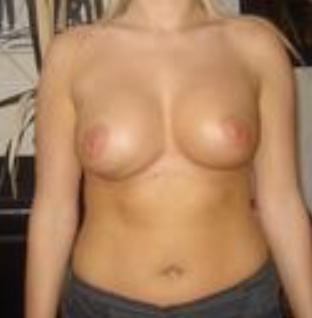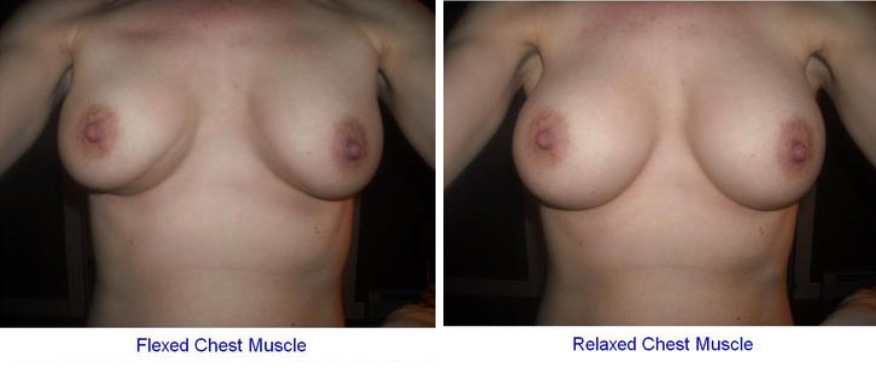Ph 909-301-0102 | 490 N Mountain Ave, Ste A Upland, CA 91786
Ph 949-416-0038 | 1401 Avocado Avenue Suite 501a Newport Beach, CA 92660
Cosmetic Breast Revision Surgery Newport Beach
Aesthetic & Cosmetic breast revisions and/or secondary (sometimes tertiary) surgeries are difficult cases and it is especially hard to establish a natural and elegant result. I have a unique training background and expertise that is specifically geared toward this type of surgery. I am double sub-specialty fellowship trained in both Aesthetic, Cosmetic, & Reconstructive breast. I am able to draw on both training backgrounds and offer a highly unique and specialized procedures to treat rare and/or difficult problems to the cosmetic breast.
-
How Much Does Breast Implant Revision Cost?

Question: I had Breast implants done 1year ago and I think one has bottomed out. Whats an average price i had 430cc’s under the muscle.
Great question. Breast implant revision surgery is an extremely variable and highly individualized surgery. No two people require the exact same breast revision surgery. Therefore, there is not a “standard” price for breast revision surgery like there is with breast augmentation surgery.In your case, based on your photos it appears your implant has “fallen” or “bottomed out”. “Bottoming out” can happen with breast augmentation. “Bottoming Out” is a generic catch-all term for:
- Loss of the Breast Fold with the implant sitting lower than normal (Also Known as Implant Malposition)
- Loosening and Lengthening of the Skin; this gives a longer distance from the nipple to fold then on the other side and give the appearance that the implant has “bottomed out”
- The muscle attachments to the skin give an illusion of a fold and give an illusion of “bottoming out” or the illusion of the implant not sitting where it should.
Why does the cause of the “Bottoming-Out” Matter?
Because each cause has a slightly different treatment.If there is a loss of the fold; then that can be fixed with stitching. It is really unlikely that you need any additional support i.e. an ADM to reinforce your fold. We use ADMs:
- Cancer reconstruction when the fold has been completely removed
- Extremely Large and Heavy Implants; somewhere around 600-650+
- Thin skin or very loose skin. Again, the idea that additional support is absolutely needed
- Previously failed attempt at fixing the fold with Sutures
Why did I spend so much time on when an ADM is Needed?
Because ADMs are extremely expensive and will add a significant cost. In addition, in most cases (not all), they are NOT needed.Based on your photos (which is only one view and not in person which can cause a limited or incorrect diagnosis), it appears you have a partial loss of the fold and this can be corrected with stitches. I do NOT think that you require an ADM. What is the cost of this specific procedure? It depends and it requires an in-person consultation to determine the exact position of your implant and the quality of your overlying tissues. Initially, I recommend starting with the surgeon that initially performed your operation. However, if you would like to have a second opinion or simply a different surgeon then please an in-person consultation would be the next step!
-
Moderate Vs High Profile Breast Implants to Retain Cup Size?
Question: I am having Breast Implant revision next week due to capsular contracture from the first surgery 11 yrs ago. I have 430cc Saline breast implants under muscle at present and will go back with Silicone breast implants. I am trying to decide between 421cc moderate profile or 425cc high profile. I am currently a 36C and want to keep my same cup size just want a more natural appearance.
Hi! Great question. Let’s start with discussing the two topics: capsular contracture and implant profiles.
Capsular Contracture:
- You are moving to silicone and I think that is the correct choice for both the capsular contracture and the desire for a natural appearance.
- I assume that you are moving toward a textured implant.
Implant Profile:
I think the “profile” of the implant is extremely confusing.- The profile of the implant is simply a fancy way to say how “wide” is the implant. The higher the profile, the more narrow the implant. With any type of profile, if you put more volume in a narrow implant it will stick out farther!
- Everyone’s chest has a set width to it and so does an individuals breast. You need to match the width (or profile) of the implant to the width of the breast and chest. Then increase or decrease the cc’s based on how big you want your chest to be?
What if you get an implant this narrower (or higher profile) than your chest and breast?
- You will get a narrow pointy breast; similar to the “Madonna Cones” look
- The sides of your chest will stick and give the illusion of a back roll or bra-fat roll
What if you get an implant this wider (or lower profile) than your chest and breast
- A wide implant can potentially “fall off” the chest and give a wide space between the breast or fall into the armpit (also known as the infamous “refund gap”).
- A wide implant that can push through the midline of the chest and create uni-boob (symmastia)
So what profile size should you go with? I think you choose the implant either moderate or high profile that has the width that matches your breast width.
-
Should I Switch to a Subfascial Breast Position?
Question: I have subglandular saline implants right now, and have been told to get a more natural appearance I should go submuscular, but I don’t like that high and tight look that most women have with the submuscular placement. What does subfascial mean? Is this a common placement? Would I benefit more with just staying in front of the muscle and switching to silicone? My implants now feel firm and are a little too far apart for my taste.
Hi and great questions.
There are three different types of implant placement: above the muscle, below the muscle, or a combination (know as a dual plane). The correct placement depends on your goals and the appearance of your breasts. You need to be examined in order to decide on the best placement for you.
It sounds like you may have capsular contracture based on your current placement (sub-glandular), saline implants, firmness, and change in implant position. If you do have capsular contracture, then you will benefit from changing the position to sub-muscular and utilizing a textured silicone implant.
“Sub-Fascial” placement is different way of saying sub-glandular. The technical answer is that the pectoral fascia and the posterior breast capsule are essentially a fused structure; therefore, a sub-fascial placement is a sub-glandular placement. It is simply fancy marketing/advertising. If you do have capsular contracture, then a sub-glandular (aka sub-fascial) placement will not be adequate treatment.
I hope that helps. Best of Luck!
-
Can Under the Muscle Implants Be Moved to Over?

Question: I am 5’8″ in height and weighing 138 lbs. I’m in good shape–I jog, do push ups, and light weights. I’ve nursed 3 children for the last 5 years. I have 425 cc implants placed partially submuscular a year ago. The slightest flex of chest muscle makes my breasts appear unnatural. It makes the implants move upward while the bottom part ripples out. It’s becoming more obvious over time. Overall, my breasts look natural and pleasant the muscle is relaxed. But to keep this from worsening, can one go from under the muscle implants to over?
The specific problem you are having is called an “animation deformity”. This is when you activate your pectoral muscle and presses down on the implant. This can temporarily deform the implant and thus temporarily change the shape of the breast.
You have three options:- Remove the implants
- Release more of the muscle
- Move the implants to above the muscle.
I recognize totally removing the implants is not a great option. But it is an option and it what make sure that the “animation deformity” does not return.
Releasing the muscle will improve (but not fix) the “animation deformity”. The procedure divides the bottom portion of the muscle and create a “muscle free” space for the implant at the bottom of the breast. This is also known as a “dual plane”.
Moving the implants to above the muscle increases your risk of scar tissue forming (a.k.a. capsular contracture) and slightly increases your risk of implant infection. Otherwise, the other “risks” discussed on this thread are anecdotal and have NOT been shown to be true per long term (5+ years) peer reviewed studies.
Based on your photos, it appears that you have a nice result when your chest is relaxed. This should not worsen over time. And if that is your main concern, I think you can have peace of mind that it should not worsen with time.
I hope that helps. Best of luck!
-
How Long Before I Heal from Breast Revision Surgery?
Incisions take 24-48 hours to “seal”; time until completely healed is 4-6 weeks. The incision is sealed after about 24 hours. This is why it is safe for you to take a shower the day following surgery. Time until the incision is healed and has significant strength, then it takes about 4-6 weeks. This is why you can typically go back to upper body lifting at 4-6 weeks. Prior to 4-6 weeks, I like patients to limit lifting to less than 10 to 15lbs.
Depending on what the breast revision entails, sometimes the breasts need time to “settle” and this can take anywhere from 1 to 3 months. Straightforward revisions need little “settling” time and you can see the final result sometimes in less than 4 weeks. However, if the breast needs to have the fold rebuilt or the implant position totally changed, then this will require a longer “settling time”. It may take 2 to 3 months until the final result is seen.
Contact Us
Our Offices
490 N Mountain Ave, Ste A Upland, CA 91786
Phone: 909-301-0102

1401 Avocado Avenue Suite 501a Newport Beach, CA 92660
Phone: 949-416-0038

Travel for Surgery

You want to ensure that you have the correct Board Certified Plastic Surgeon with an office and staff that will take care of you.
Learn More